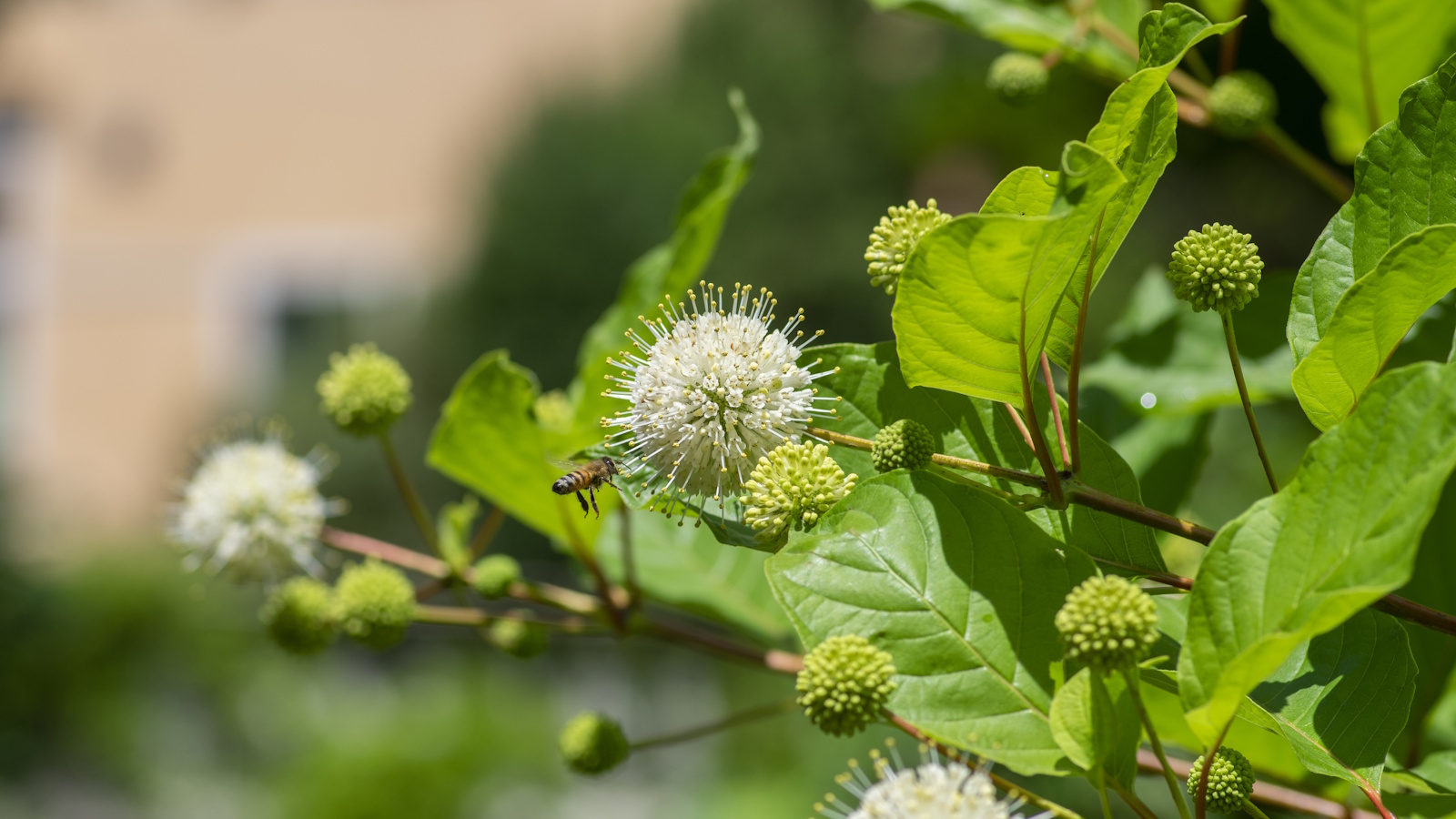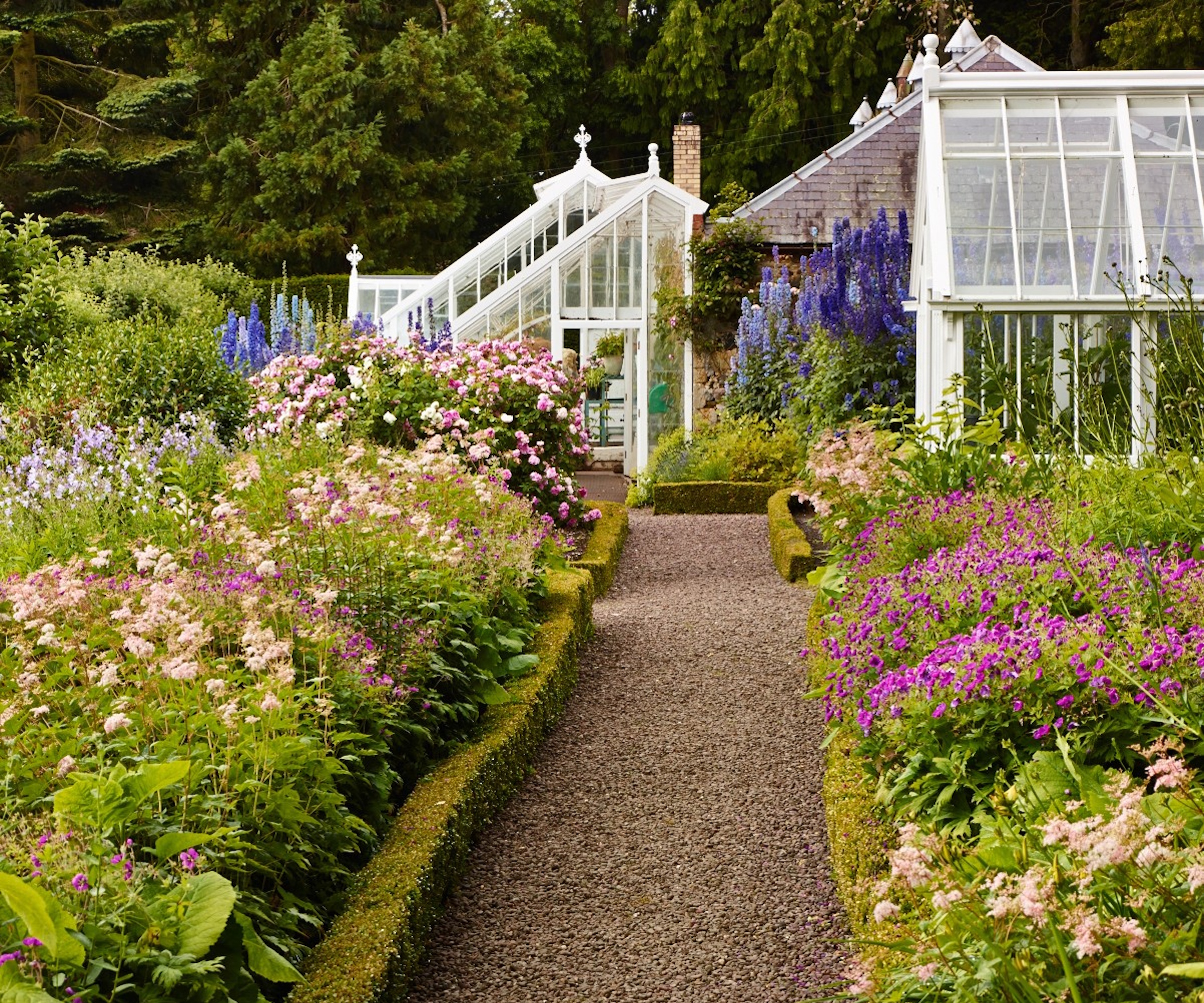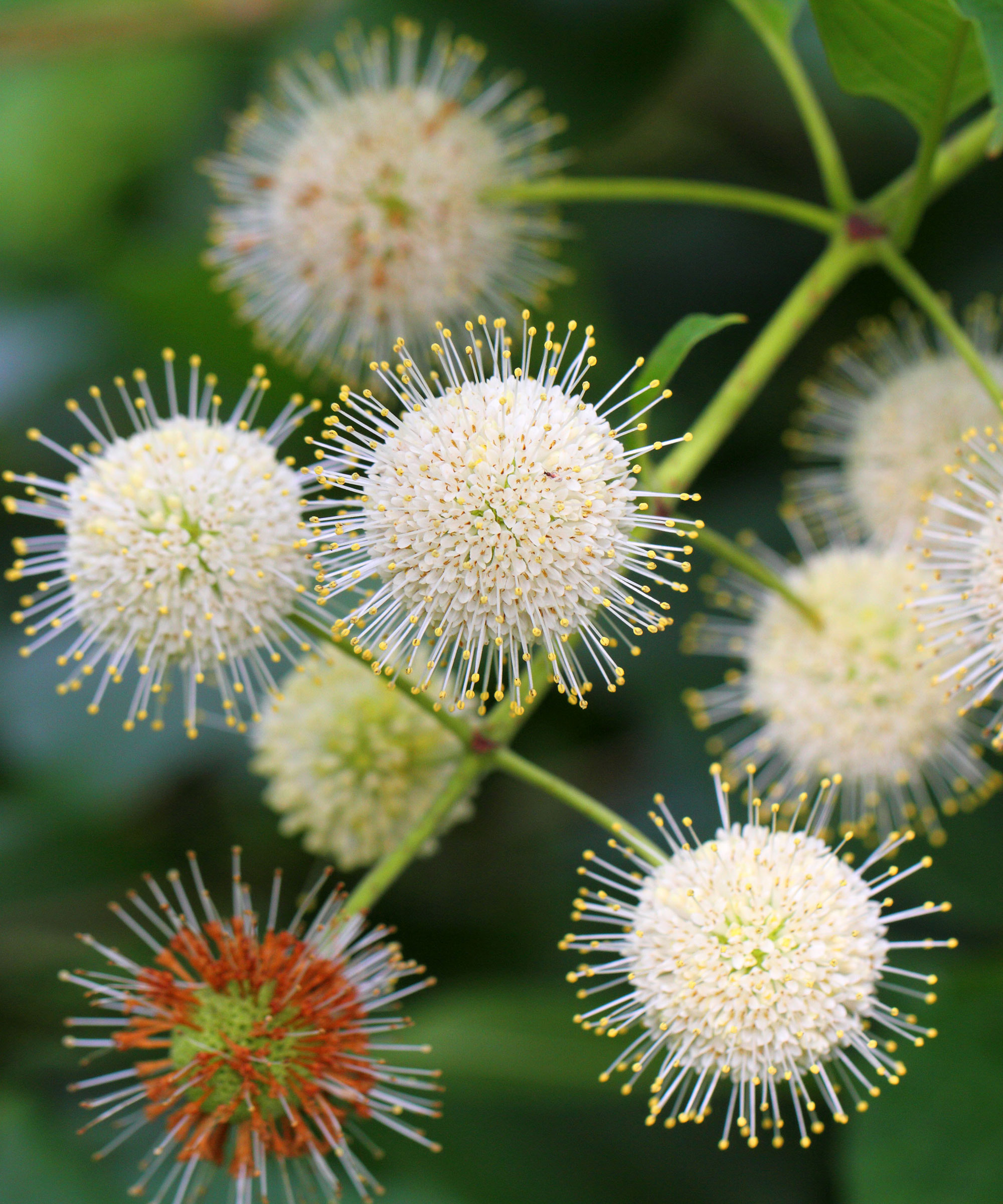
Buttonbush, or Cephalanthus occidentalis, is a resilient shrub that many gardeners value for both utility and beauty. As you can see in the images here, this shrub is easily discernible by its white pincushion blooms that have a fragrant aroma.
Native to North America, buttonbush shrubs typically grow best near swampland, wetlands or along riverbanks. However, this tough species can grow almost anywhere, and with its fast-growing habit, it is useful if you want to quickly fill your borders with sizeable native plants that will provide interest for many months of the year.
So, if you are looking for one of the best fragrant shrubs to elevate your backyard this year, then learning how to grow buttonbush is a good idea. Our expert guide has all the information you need to know.

How to grow buttonbush
For a striking native plant, you won't find much better than buttonbush shrubs. Not only is it easy to learn how to grow buttonbush, but this species is highly adaptable to a range of situations, meaning that wherever you are and whatever your climate, you will likely be able to grow this plant.
Given time, buttonbush shrubs will grow to a maximum height of six to eight feet, making them ideal as a plant for the back of the border in both small and large yards.
Growing habit for buttonbush plants

'Buttonbush is a remarkably adaptable native shrub that thrives in damp to wet, partially shaded conditions and brings high ecological value to the garden,' says Tabar Gifford, plant expert and American Meadows master gardener.
'These fast-growing shrubs can be planted from zone 5 to zone 10,' Tabar adds, 'with a preference for slightly damp soils. For this reason, they are a good option for rain gardens, wet borders, or low spots in the yard.
'The mid-spring to summer white flowers are unlike anything else in the landscape. Spherical flowerheads that resemble pincushions and are packed with nectar-rich tubular florets that attract a wide range of pollinators, including native bees, butterflies, skippers, and even hummingbirds.
'Beyond its ornamental flowers, Buttonbush offers important seasonal interest and habitat value,' Tabar says.
'After flowering, it develops round, reddish fruits that provide food for over 20 bird species, including both songbirds and waterfowl.
'The glossy green foliage is also deer resistant, and once established, it tolerates a wide range of soil types, including clay and even standing water, making it an ideal solution for tough garden spots.'
Live buttonbush shrubs are available from Amazon.
Care guide for buttonbush shrubs

- Soil: Buttonbush shrubs thrive in wet borders, where other plants may struggle to grow. Whilst the species is adaptable to most situations, it tends to prefer a neutral to slightly acidic soil, with a soil pH of 6.7 to 7.2.
- Light: For the best results, grow buttonbush shrubs in part-shade to full-sun. In southern regions, provide some afternoon shade to protect your plant, whereas in cooler, northern areas, full sun is ideal.
- Watering: Consistent watering is important for your buttonbush shrub, especially during the first year after planting. Monitor the soil during the spring and summer and prevent the roots from drying out, completing a spot of deep watering if needed. To improve soil health, consider applying a thick layer of mulch every fall or winter.
- Fertilizing: These shrubs prefer nutrient-rich soil, so will benefit from an annual application of feed in the spring, which will encourage plant health and blooming. Use something like these tree and shrub fertilizer spikes, available from Walmart.
- Pruning: If left unpruned, buttonbush shrubs can take on a natural, wild shape and form, which is ideal if you are keen on wild gardening. However, if you want to keep the shrub in check, you can prune it in spring. Do not be afraid to hard prune the plant, as it will grow back quickly. Try these Felco pruners, available from Walmart, for your buttonbush pruning.
- Toxicity: The leaves of buttonbush plants are toxic to humans and can cause skin irritation. Wear gloves when planting and pruning to keep your skin safe. In addition, all parts of the plant are toxic to pets.
FAQs
Can I grow buttonbush shrubs in pots?
Yes, buttonbush can also be grown successfully in large containers, provided its roots remain consistently moist. 'Choose a sturdy, large pot with excellent drainage and fill it with a moisture-retentive, rich potting mix,' Tabar says. 'A container-grown buttonbush is perfect for a patio, where its unique form can be easily appreciated up close.' Keep the container in full sun to partial shade, and water regularly, especially in dry periods.
Buttonbush is a versatile, low-maintenance option that pairs especially well with other moisture-loving plants for pollinators.
Tabar recommends other bee and bird-friendly natives, like Joe pye weed, swamp milkweed, common boneset, and blue flag iris, helping to create a backyard that is both functional and beautiful.
Shop garden accessories
This 'Myrtlewood Planter' by Gracia Oaks is perfect for small to medium-sized buttonbush shrubs.







